The solar world is abuzz with the advantages that energy storage systems can bring to solar owners.
In Germany alone, their support for solar storage has resulted in more than 4000 systems being installed so far this year. In Australia, we don’t have any mechanisms to support solar storage systems (yet) but sales are slowly building, price is falling and the range of products is increasing.
Ninety nine percent of the solar storage offers around the world use Lithium Ion batteries, the very latest and greatest storage battery. This is a new application for the technology, but it is well understood, having been used in mobile phones and laptops for the better part of a decade now. Electric cars and motorcycles also use Lithium Ion batteries extensively and are driving the massive surge in manufacturing capacity and research and development
However, with the advances come’s lessons and new combinations of chemistry, so we thought we’d try to de-mystify and unravel the Lithium story a little bit.
Lithium Ion batteries belong to a family of storage products using different chemistries; when we researched it we found a list of almost thirty different combinations each with different strengths of weaknesses.
They are constructed in a similar way to traditional lead acid batteries with positive and negative electrodes (plates) surrounded by an electrolyte. In a lead acid battery the electrodes are lead (with a mixture of other metals and elements) and the electrolyte is sulphuric acid. In Lithium Ion batteries the electrodes are mostly carbon or graphite based with a mixture of elements. The electrolyte is lithium salt in an organic solvent.
All batteries have their chemical construction varied to suit different needs or applications and Lithium Ion batteries are no different. For starting a big engine, you need a battery that can deliver lots of energy very fast to run a starter motor under huge load. For a home, you need a smaller trickle of energy over a longer period. For electric vehicles, you need a bit of both.
The bottom line with Lithium Ion batteries is they are smaller, lighter and store more energy than lead acid batteries, which is why they are increasingly popular. Their promise is huge although there remains a price premium.
Lead acid batteries contain lead and acid and are heavy; but they are cheap and well understood. The can be extordinarily dangerous due to the toxicity of the materials and the explosive gasses they give off. Lithium Ion batteries generally aren’t so toxic but some chemistries can catch fire, presenting different risks.
There are also a range of ways to package and construct Lithium Ion batteries but one of the major differences to lead acid is they are sealed and don’t contain a liquid electrolyte. They are generally packaged as a cylinder (like a D cell battery) but increasingly in a pouch (which looks like a very high tech sandwich bag).
Without getting into a long-winded analysis of the pros and cons of the different chemistries and construction, a great and simple way to compare them is with the following graphs which compare the five most common types of Lithium Ion battery types used today.
These graphs compare the following attributes:
- Specific energy: the energy per unit of mass
- Specific power: the power per unit of mass
- Safety; the relative danger of a chemistry
- Cost the relative cost of a chemistry
- Life span; the relative life expectancy under controlled conditions
- Performance: the ability of the chemistry to work in a range of conditions
Take a look and you can see that various chemistries offer different pros and cons for different uses. One of the largest users of Lithium Ion batteries in the world is US-based electric car company Tesla. Their Chief Technology Officer was interviewed recently about a new factory they are building which will double the global manufacturing capacity and aims to bring down the cost for both automotive and other uses such as solar support. On Lithium technology, he commented that “Lithium Ion battery technology will dominate for five, maybe ten years”; a strong sign that this genuinely is the leading technology.
So, when you are looking at Lithium Ion batteries, remember there are lots of types out there and their life and performance will be determined by the chemistry. It’s important to make sure you have the right type for the right application to fully realise the benefits of this amazing new storage product.
© 2014 Solar Choice Pty Ltd
- Should you oversize Solar Panels to your Inverter? Pros and Cons explained - 3 February, 2017
- Lithium what? Know your Lithium Ion battery technologies - 28 May, 2014
- Government attacks Australian solar SMEs - 26 May, 2014
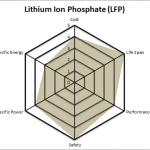
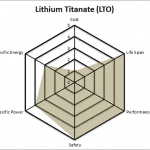
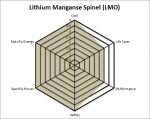
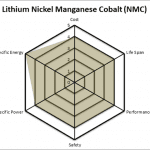
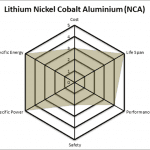
Nice article! Gives a very clear explanation of the lithium ion batteries. I will keep this as reference material.
Hi Damon
Glad it was helpful!
Its a great idea and a fascinating topic; there are variety of schools of thought on battery sizing for PV. I’ve been playing with some models that look at this issue and importantly, how storage and tariffs interrelate. Personally, I suspect that on grid storage will start smaller due to economics, and be targeted at just avoiding peak charges rather than meeting whole of day demand. This could mean that (say) 5kWh of storage may suffice, helping to make it more affordable in the short term, increasing as prices reduce.
A also know Glen Morris from the Australian Solar Council has been doing a roadshow on storage and talking about this issue – you may still be able to book into one.
There’s a decent little study here- http://energyexemplar.com/wp-content/uploads/publications/Nur%20Sheilawatie%20SAIFUL%20AZHAR%20ELEC4711%20The%20Impact%20of%20Rooftop%20Solar%20PV%20and%20Battery%20Storage%20on%20the%20Australian%20NEM.PDF
Thanks Nigel,
A concise introduction to the diverse range of Lithium battery chemistries. Further to this, with energy storage systems (ESS) poised to integrate sharply into existing and future PV infrastructure it may be worth discussing their optimal sizing (kwH) and the possible effect they may play on PV sizing. That is, with the average Australian PV array rapidly creeping towards 5kw (US 8.3kw), what is the right PV/ESS balance? With the average Australian household consuming approximately 20kwH/day, I would suggest a 5kw PV system coupled with a 15kwH ESS would strike the necessary balance to cover most households average usage. I would be interested to hear your thoughts on this.